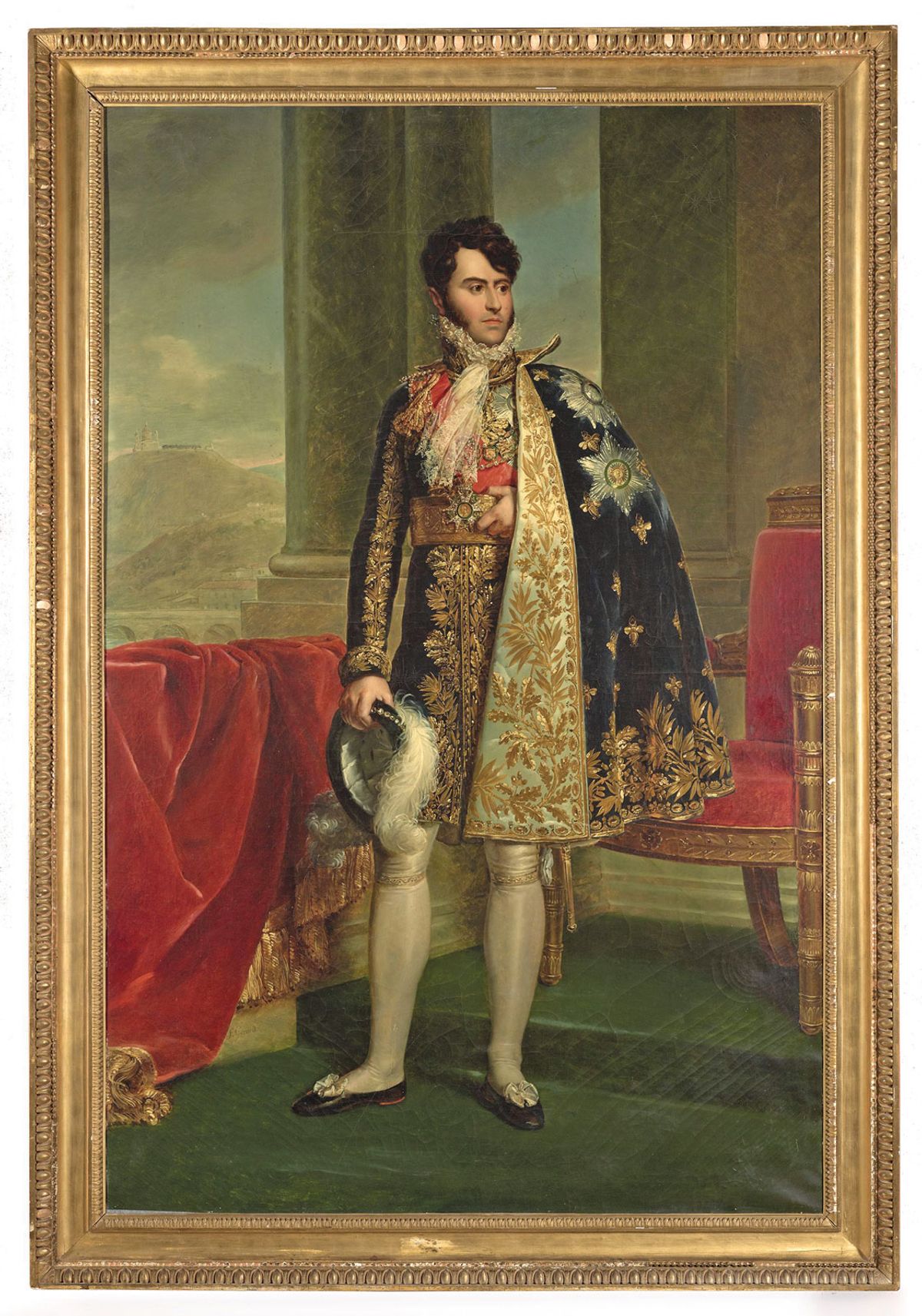Months after the Frick Collection in New York bought a vaunted 19th-century portrait by the French painter François Gérard, the Italian government has revoked the export licence it granted for the work and is seeking its return to Italy, a cultural official says.
The government contends that the licence should not have been issued because the painting is part of Italy’s cultural heritage. It belatedly realised “the importance of the painting for national patrimony as a rare and significant document of the Napoleonic era in Italy”, says Maria Vittoria Marini Clarelli, the head of the circulation department of the directorate-general of archaeology, fine art and landscape at the Italian culture ministry in Rome.
What is more, she says, the portrait belonged to a princely Italian family collection that is “among the most important in the history of Italian art”.
Thought to have been painted around 1810 in Paris, the work is a full-length portrait of Prince Camillo Borghese, a prominent art patron and the brother-in-law of Napoleon. Marini Clarelli describes him as “an emblematic figure of the Italian aristocracy” and “a protagonist of political and cultural life in Rome and Turin”.
The Frick, which adds only sparingly to its collection, described the portrait as its most significant painting purchase for nearly 30 years when it announced the acquisition last December.
The museum declined to comment on the Italian move. “As we understand that proceedings are pending in Italy, the Frick does not believe it appropriate to comment at this time,” a spokeswoman says.
The Italian culture ministry’s directorate of archaeology, fine art and landscape notified the export office of the superintendency of Bologna on 9 May that it should begin proceedings to revoke the licence, Marini Clarelli says. The export office initiated the revocation on 16 May and completed it on 14 June, she adds. The decision is open to appeal.
Robilant + Voena, the international art gallery that sold the painting to the Frick for an undisclosed price, expressed consternation over the decision. A spokesman for the gallery says in a statement that its request for the export licence, submitted in February 2017 to the Bologna office, “complied fully with all the procedures set out by Italian law in providing the information that such law requires”. The export certificate was issued the following month. The statement adds that Robilant + Voena was therefore “surprised” that, more than a year later, the Bologna export office would “attempt to challenge and overturn its own decision in such an incomprehensible fashion”. The dealers say: “In doing so, they risk making a mockery of the entire decision-making process, and they undermine trust in their expertise and consistency in their own assessments.”
The portrait, which is nearly 7ft tall and is still in its original frame, is said to be in pristine condition after remaining for two centuries in the collection of descendants of the Borghese family. Gérard (1770-1837) is described as one of the most significant French artists of the first half of the 19th century. At the peak of his career, he portrayed many members of the Bonaparte family, including Napoleon, and his work is represented in the collections of the Louvre in Paris, New York’s Metropolitan Museum of Art, St Petersburg’s State Hermitage Museum and other major art institutions.
When the Frick announced the acquisition in December, it said that the painting would “coalesce seamlessly” with its masterworks by Boucher, Fragonard, Ingres, Rembrandt, Titian, Holbein, Van Dyck and David, among others.
The museum had planned to put the painting on view in Luigi Valadier: Splendour in 18th-Century Rome, an exhibition about a pre-eminent Italian silversmith, which is due to open on 31 October. “We had hoped to include the painting… however, it does not fit well into the exhibition design,” a spokeswoman for the museum says. “At this time, we have not yet determined when it will go on view.”
Robilant + Voena, meanwhile, has enlisted Art Recovery International, a firm that specialises in mediating restitution claims, to look into its case. Christopher Marinello, the company’s chief executive, says that it was already engaged in “administrative procedures” with the Italian authorities. “We believe that the dealer is acting completely in good faith and we hope to persuade the authorities to withdraw their claim,” he says.
Marini Clarelli says that the gallery’s export application did not identify the portrait subject as Camillo Borghese but simply described the work as a “male portrait”. But Marinello says that Borghese is identified clearly as the subject on the back of the painting. “All you have to do is turn it around and you have the name of the sitter,” he says.
Marinello declined to discuss the specifics of the export licence but compared the stand-off with a recent dispute over the export of a 15th-century painting by the Italian artist Carlo Crivelli from Portugal. In that case, the Portuguese government granted an export licence for the work but later said that it had been issued in error. By that time, the painting had been sold to a private collector overseas. Under an agreement mediated by Art Recovery International, the government relinquished the claim to the painting, Marinello says.
Italy is known for its stringent art- export restrictions, as well as aggressive campaigns for the repatriation of art and antiquities lost through looting. The move to retrieve the Gérard portrait underlines its determination to maintain a broad definition of its patrimony.
• For a legal analysis of this case, see the September issue of The Art Newspaper


